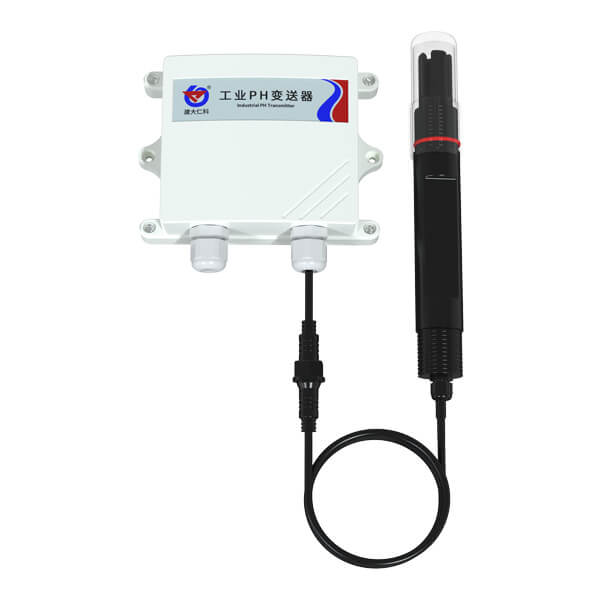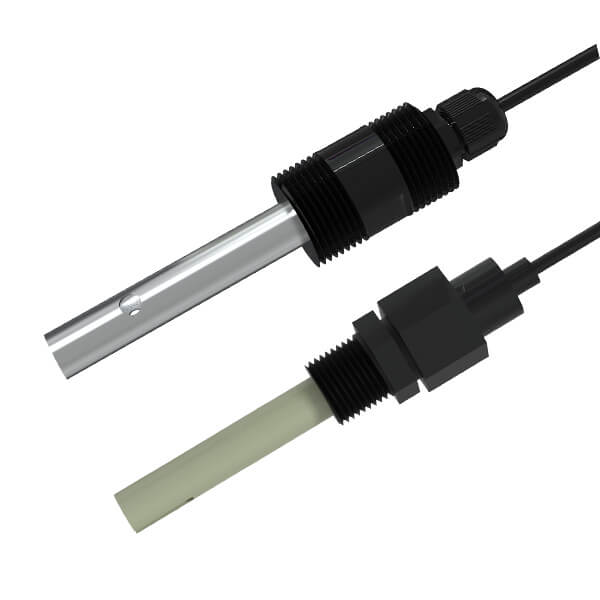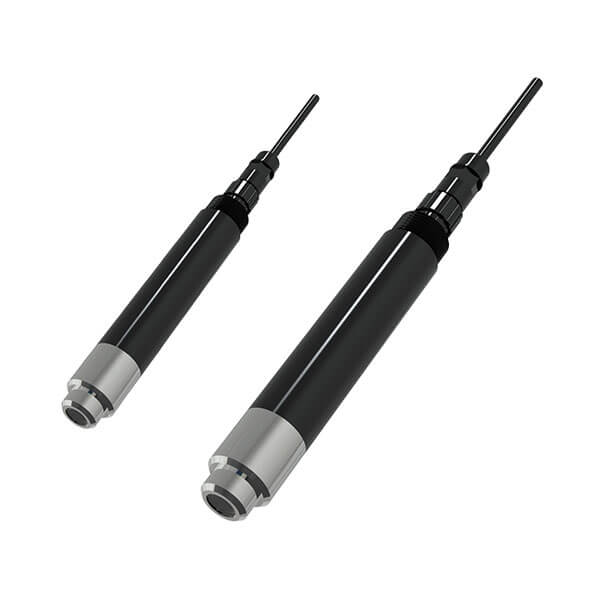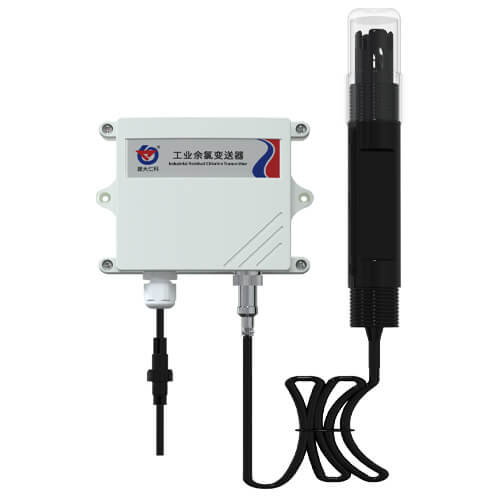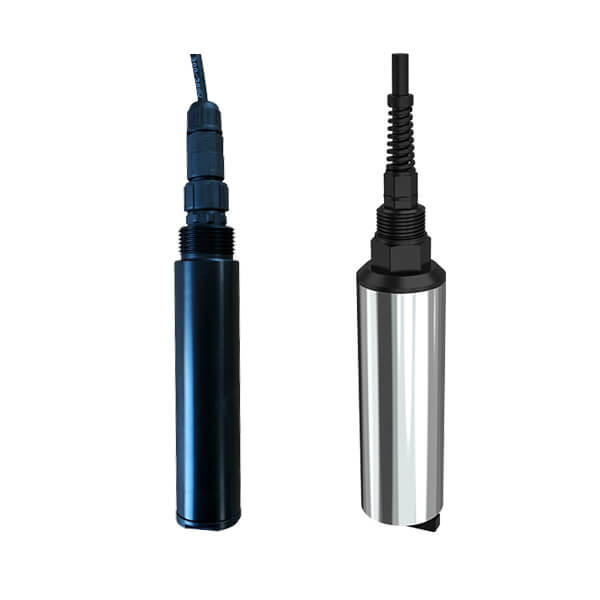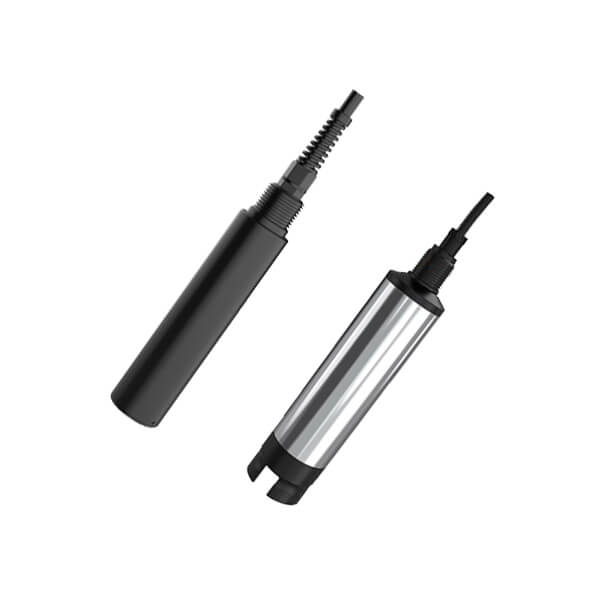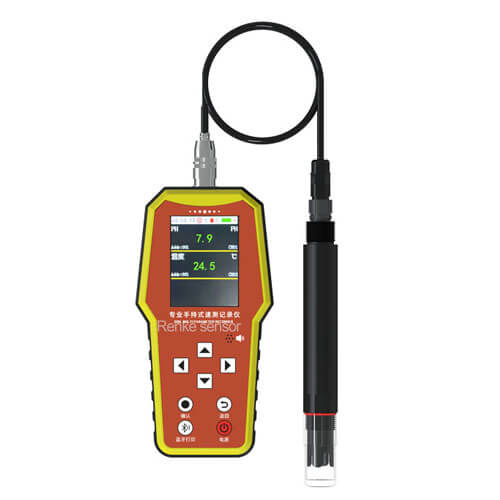Table of Contents What do pH Mean in Water? The water pH is an important indicator of its acidity or
COD Sensor
Renke’s COD sensors use the ultraviolet absorption method to monitor the chemical oxygen demand (COD) in solutions. It does not require chemical reagents, preventing secondary pollution. With fast response speed and high sensitivity, it is unaffected by chloride ions, ensuring greater accuracy. Designed with a focus on intelligence, high precision, and low maintenance, this COD sensor integrates IoT and cloud platforms to enable continuous water quality monitoring.
- Model: RS-COD-*-2-EX
- MOQ: 1 PCS
- Delivery date: within 24 hours
- Price: $419
About COD Sensor
The RS-COD-*-2-EX COD sensor is a device designed to measure the chemical oxygen demand (COD) in solutions using the ultraviolet absorption method. It does not require chemical reagents, ensuring no environmental pollution. With no extra accessories, it is easy to install, highly accurate, and capable of long-term stable COD detection in water.
The sensor features an integrated automatic cleaning system that effectively removes impurities and prevents biofouling. Additionally, it has a built-in temperature transmitter, providing automatic temperature compensation for accurate measurements. By utilizing modulated light signals, it effectively minimizes interference from visible light.
Our COD sensor supports multiple signal outputs, including RS485, 4-20mA, 0-5V, 0-10V, Ethernet, and WiFi. The RS485-output version includes turbidity measurement, compensating for turbidity interference in COD readings. Currently, our COD sensors are widely used in water treatment, aquaculture, and environmental monitoring industries.

How to view data?
1. The integrated COD sensor can be paired with our portable water quality analyzer, allowing measurement data to be directly read on the LCD screen. Stored records can be uploaded to a computer via USB.
2. The COD sensor can be connected to an environmental monitoring host and uploaded to our free cloud platform, enabling remote monitoring via APP, PC, or tablet.
3. The sensor can be connected to the customer’s own upper computer software through an RS485 to USB converter for real-time monitoring.
COD Sensor Parameters
| Parameters | RS485 output | 4-20mA/0-5V/0-10V output |
|---|---|---|
| Power supply | DC 12~30V | DC 10~30V |
| Power consumption | 0.6W (normal); 4.5w (cleaning) | ≤1.2W (normal); ≤5W (cleaning) |
| Measuring principle | Dual wavelength ultraviolet absorption method | |
| Measuring range | COD: 0~500mg/L equiv.KHP, Turbidity: 0~200NTU | 0~500mg/L equiv.KHP |
| Accuracy | COD: ±5%FS equiv.KHP (25℃), Turbidity: ±5%FS (25℃) | ±5%FS equiv.KHP(25℃) |
| Resolution | COD: 0.1mg/L, Turbidity: 0.1NTU | 0.1mg/L |
| Repeatability | ±1%FS equiv.KHP (25℃) | |
| Response time | ≤20sec | |
| Working conditions | 0~40℃ | |
| Protection level | IP68 | Electrode: IP68, conversion module: IP65 |
| Flow rate | <3m/s | |
| Pressure resistance | <0.1MPa | |
| Electrode line length | 5m by default (customization supported) | |
| Casing material | Corrosion-resistant plastic, stainless steel | |
| Maintenance frequency | 3 months | |
| Self-cleaning life | 18 months | |
Installation and Maintenance
How to install COD sensor?
1. Although the COD sensor does not have specific orientation requirements when placed in water, it is recommended to place it horizontally for optimal positioning. This helps avoid the impact of debris and foreign objects in the water on the measurements.
2. When suspending the sensor, ensure it does not collide with the container walls due to water flow. If the water flow at the measurement point is fast, make sure to securely fix the sensor.
3. The device should be placed in an area free from bubbles, and when installing the sensor, the depth below the water surface should not exceed 2 meters. Considering water level fluctuations, it is advised to submerge the sensor at least 30 cm below the lowest water level.
4. The device is equipped with an NPT3/4 thread and can be used with our waterproof pipe. The cable should pass through the pipe, and the sensor can be screwed into the waterproof pipe thread.
How to maintain COD sensor?
1. Regularly check the measurement window for any attachments. It can be cleaned with tap water or wiped with a damp soft cloth. For stubborn stains, add a small amount of household detergent to tap water for cleaning. Be careful not to scratch the measurement window during the process.
2. Periodically inspect whether the self-cleaning brush is functioning properly and check for any damage.
3. If the measurement readings are too high, too low, or consistently unstable, check whether the sensor’s measurement window is clean.
4. After 18 months of continuous use, the dynamic sealing component of the self-cleaning device should be returned to the factory for replacement. The actual replacement time may vary depending on the frequency of self-cleaning.
5. The device should be calibrated before each use. For long-term use, calibration is recommended every three months. The calibration frequency should be adjusted based on the monitoring environment.
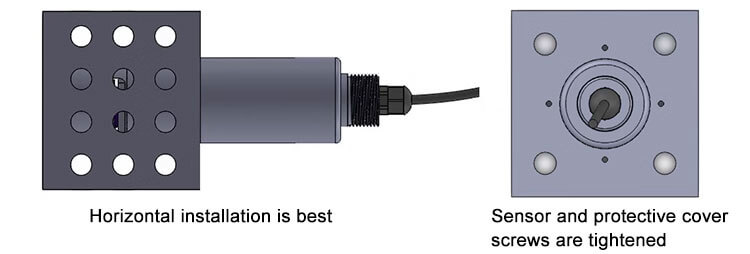
COD Sensor FAQs
What is COD?
COD (Chemical Oxygen Demand) is an indicator used to measure the amount of reducing substances in water. These substances are primarily organic matter, making COD a key parameter for assessing organic pollution levels in water. A higher COD value indicates a higher level of organic pollution in the water body.
What is a COD sensor?
A COD (Chemical Oxygen Demand) sensor is a device used to measure the level of organic pollution in water. COD represents the amount of oxygen consumed when organic matter in water is oxidized and decomposed, typically expressed in mg/L.
How does a COD sensor work?
Our COD sensor uses the ultraviolet absorption method. Its measurement principle is based on the absorption characteristics of organic matter at ultraviolet wavelengths. By measuring the attenuation of 254 nm wavelength light as it passes through the water, the sensor calculates the COD value at the measurement point.
What is the Ultraviolet Absorption Method?
The Ultraviolet Absorption Method (UV method) is a physical technique for COD detection. This method does not require chemical reagents and is based on the selective absorption of specific wavelengths of ultraviolet and visible light by organic substances in water. By measuring the absorption of monochromatic light by the water sample, the concentration of organic matter is determined, establishing a relationship between absorbance at a specific wavelength and the COD value. The COD value mainly depends on the composition and concentration of organic matter, which strongly absorbs light at 254 nm. By measuring the absorbance of wastewater at 254 nm and using a pre-established correlation between absorbance and COD concentration, the COD value is calculated.
What’s in the packing list?
RS485 Type: Self-cleaning COD sensor, 5m cable, certificate of conformity, warranty card, etc.
Analog Type: Self-cleaning COD sensor, Wang-shaped shell conversion module, 5m cable, certificate of conformity, warranty card, etc.
What should we pay attention to when using COD sensor?
- The device contains sensitive optical and electronic components; ensure it is not subjected to strong mechanical impacts.
- Avoid excessive tension or stress on the cables during installation.
- Prevent the device from prolonged exposure to direct sunlight.
- Do not touch the measurement window with your hands.
- Avoid any damage to the measurement window.
- Ensure no bubbles adhere to the device surface, especially the measurement window, during measurement and calibration.
- Avoid applying any direct mechanical stress to the device during use.
- Do not forcibly rotate the self-cleaning brush shaft.
What are the applications of COD sensors?
In addition to traditional industrial wastewater and municipal sewage monitoring, COD sensors can also be applied in various fields such as environmental monitoring, healthcare, and food processing. In environmental monitoring, they can be used to measure the organic matter content in natural water bodies such as lakes, rivers, and oceans, providing data support for environmental protection agencies. In the healthcare sector, they can detect organic substances in intravenous fluids to ensure medical safety. In the food processing industry, they can monitor organic matter in food wastewater and during processing to ensure product quality.
Popular Water Quality Sensors
Related Blogs
Table of Contents What is conductivity in water? Conductivity in water is the ability of water to conduct electricity. It
Table of Contents We need to understand what is turbidity, before learning the turbidity sensor. Turbidity is a measure of
What is dissolved oxygen? Dissolved oxygen (DO) refers to molecular oxygen dissolved in water. The unit is mg/L, which means
The commonly used communication method for data acquisition and control is RS485. RS485 is a general communication standard. It can
Everyone knows that the choice of water quality sensors is very important. In water measurement, the ph sensor is one of the
Natural disasters such as floods and heavy rains pose threats to lives and property around the world. Without a proper
Table of Contents Water is the source of life, integral to every aspect of human production and daily living. In


